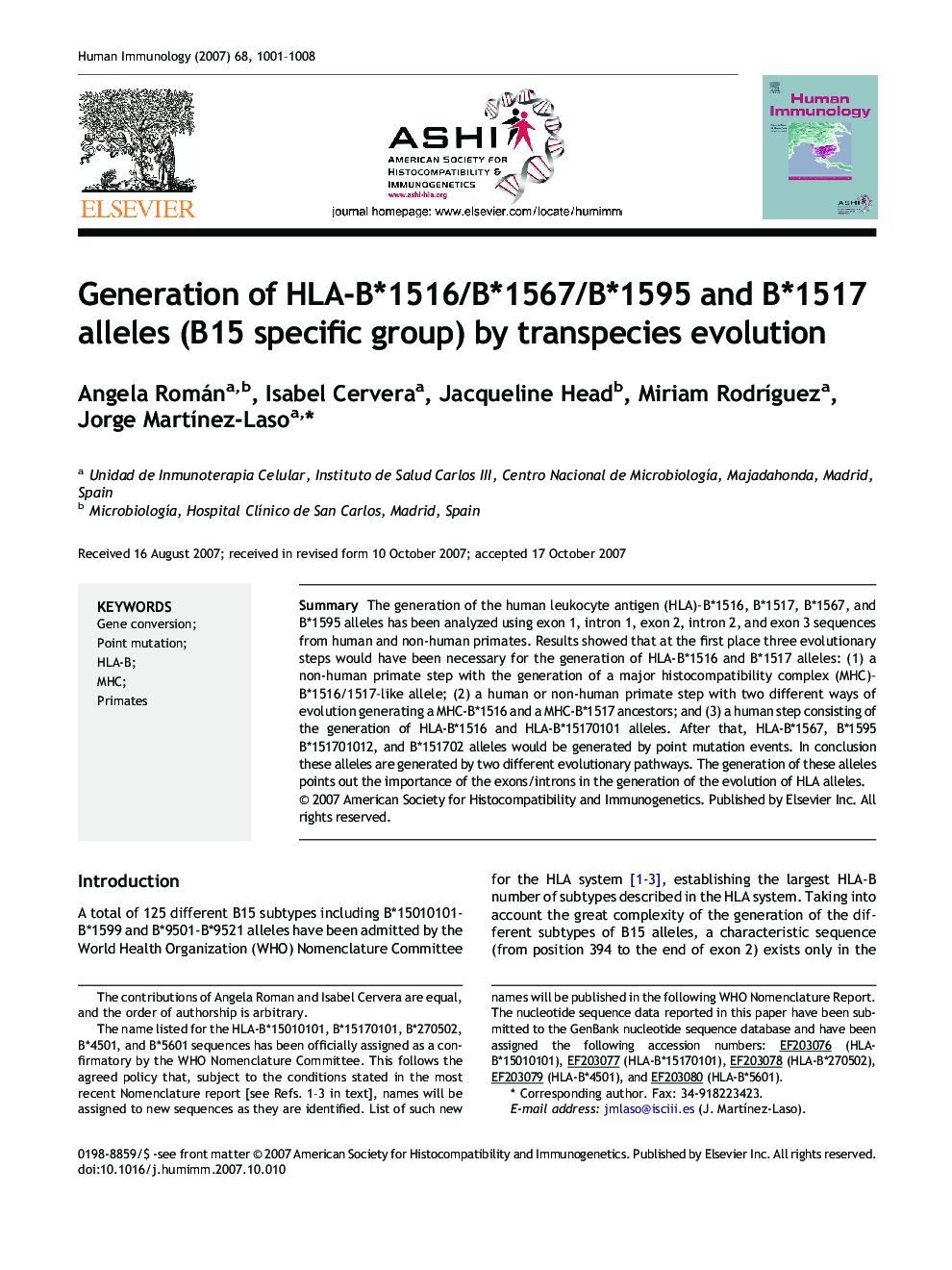| Article ID | Journal | Published Year | Pages | File Type |
|---|---|---|---|---|
| 3352003 | Human Immunology | 2007 | 8 Pages |
Abstract
The generation of the human leukocyte antigen (HLA)-B*1516, B*1517, B*1567, and B*1595 alleles has been analyzed using exon 1, intron 1, exon 2, intron 2, and exon 3 sequences from human and non-human primates. Results showed that at the first place three evolutionary steps would have been necessary for the generation of HLA-B*1516 and B*1517 alleles: (1) a non-human primate step with the generation of a major histocompatibility complex (MHC)-B*1516/1517-like allele; (2) a human or non-human primate step with two different ways of evolution generating a MHC-B*1516 and a MHC-B*1517 ancestors; and (3) a human step consisting of the generation of HLA-B*1516 and HLA-B*15170101 alleles. After that, HLA-B*1567, B*1595 B*151701012, and B*151702 alleles would be generated by point mutation events. In conclusion these alleles are generated by two different evolutionary pathways. The generation of these alleles points out the importance of the exons/introns in the generation of the evolution of HLA alleles.
Related Topics
Life Sciences
Immunology and Microbiology
Immunology
Authors
Angela Román, Isabel Cervera, Jacqueline Head, Miriam RodrÃguez, Jorge MartÃnez-Laso,
